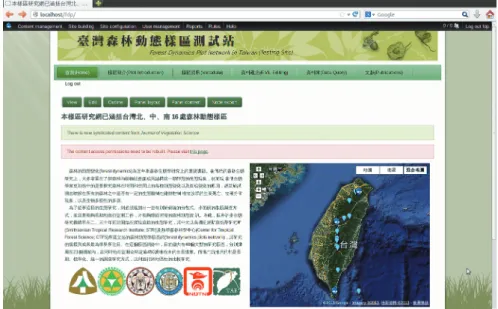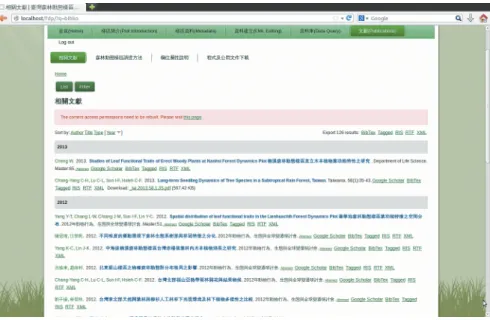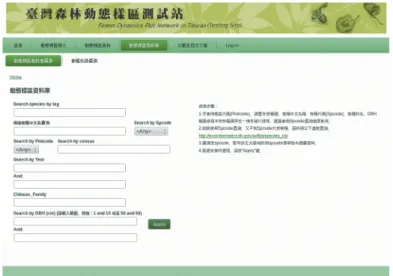Forest Dynamics Plot Database of Taiwan:
A Content Management Approach
Chau-Chin Lin, 1,2) Yu-Hwang Wang, 1) Sheng-Shan Lu 1)
【 Summary】
This study adopted the content management system, Drupal Ecological Information Manage- ment System, to develop a database and a website to host 16 forest dynamics plots of Taiwan.
These plots established since 1990 are from 1 to 25 ha in size. We edited the detailed metadata of the 16 plots based on Ecological Metadata Language to link all related information including the dataset, project, researcher, publications, and plot profile. The linked information is presented in a webpage format. Users can easily browse the information through designed pages such as 116 pub- lications which have been collected with bibliographical pages. In order to use the dataset of plots, we also created a search interface for users to query data with survey tags or species names. The results showed that the Drupal Ecological Information Management System is a potential tool for forest dynamics plots data management.
Key words: metadata, EML, data Management, LTER.
Lin CC, Wang YH, Lu SS. 2015. Forest dynamics plot database of Taiwan: a content management approach. Taiwan J For Sci 30(4):281-8.
1)
Forest Protection Division, Taiwan Forestry Research Institute, 53 Nanhai Rd., Taipei 10066, Taiwan. 林業試驗所森林保護組,10066台北市南海路53號。
2)
Corresponding author, e-mail:chin@tfri.gov.tw 通訊作者。
Received July 2015, Accepted August 2015. 2015年7月送審 2015年8月通過。
研究簡報
台灣森林動態樣區資料庫:內容管理系統之應用



